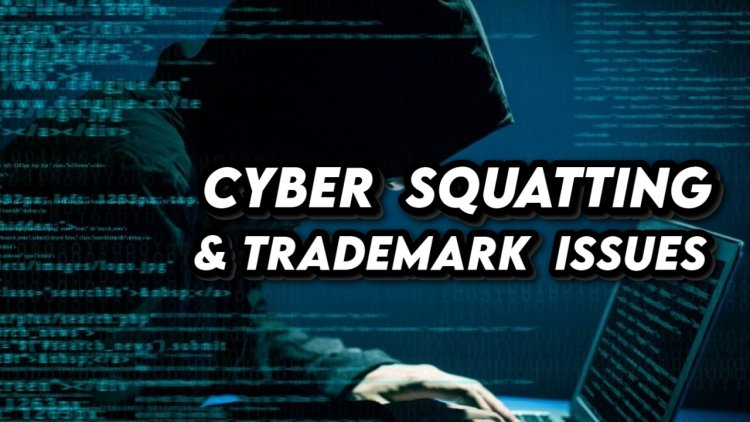Cybersquatting and Trademark Issues: Navigating the Landscape through the Uniform Domain Resolution Policy
Cybersquatting, the malicious practice of registering domain names in bad faith to exploit established trademarks, poses a significant challenge in the digital era. This article explores the historical evolution of cybersquatting, its impact on trademark rights, and the role of the Uniform Domain Resolution Policy (UDRP) in addressing these issues. Through an in-depth analysis of key cases, the article aims to shed light on the effectiveness and limitations of the UDRP in protecting intellectual property online.

Introduction:
The digital landscape has transformed the way we conduct business and communicate, but with these advancements comes a dark side: cybersquatting. This practice involves the unauthorized registration of domain names that mimic or exploit established trademarks, posing serious threats to intellectual property rights. As businesses and individuals grapple with the repercussions of cybersquatting, the Uniform Domain Resolution Policy (UDRP) stands as a key player in mitigating domain name disputes. This article explores the historical context of cybersquatting, its impact on trademark rights, and the efficacy of the UDRP in addressing these challenges.
The Historical Evolution of Cybersquatting:
Cybersquatting didn't emerge overnight; it evolved alongside the internet's expansion. In the early days, opportunistic individuals recognized the potential for profit by registering domain names identical or confusingly similar to well-known trademarks. Landmark cases such as Panavision International, L.P. v. Toeppen (1998) and Avery Dennison v. Sumpton (2001) marked pivotal moments, highlighting the need for legal mechanisms to combat this unethical practice.
Impact of Cybersquatting on Trademark Rights:
The repercussions of cybersquatting extend beyond the financial implications for businesses. It dilutes the distinctiveness of trademarks, undermines consumer trust, and can redirect traffic to fraudulent or competing websites. As a result, trademark owners find themselves entangled in legal battles to reclaim their online identity and protect their brand reputation.
The Uniform Domain Resolution Policy (UDRP):
Introduced in 1999 by the Internet Corporation for Assigned Names and Numbers (ICANN), the UDRP aimed to provide a streamlined and cost-effective means of resolving domain name disputes arising from cybersquatting. This policy establishes a framework for impartial arbitration, allowing trademark owners to seek redress without resorting to lengthy and costly litigation.
Key Components of the UDRP:
The UDRP operates on three main pillars:
a. Identical or Confusingly Similar: The complainant must demonstrate that the disputed domain name is identical or confusingly similar to a trademark in which they have legitimate rights.
b. Rights or Legitimate Interests: The complainant must establish that the respondent lacks legitimate rights or interests in the disputed domain name.
c. Bad Faith Registration and Use: The complainant must prove that the respondent registered and is using the domain name in bad faith.
These components form the basis for expert panellists to adjudicate disputes and make informed decisions.
The Effectiveness of the UDRP:
Over the years, the UDRP has proven effective in many instances, providing a swifter and more cost-efficient alternative to traditional litigation. Its streamlined procedures, reliance on expert panellists, and global enforceability contribute to its success. The policy facilitates the prompt resolution of disputes, allowing trademark owners to regain control of their domain names and protect their intellectual property.
Limitations of the UDRP:
While the UDRP has been a valuable tool, it is not without limitations. The policy may not address all facets of trademark infringement, and in some cases, pursuing traditional legal avenues may be necessary. Moreover, the UDRP does not offer injunctive relief, leaving trademark owners to seek additional legal measures for comprehensive remedies.
Evolving Challenges:
As technology continues to advance, new challenges in cybersquatting emerge. Artificial intelligence, deep fakes, and decentralised technologies introduce novel avenues for bad actors. The UDRP must evolve to address these challenges effectively, striking a balance between staying ahead of technological advancements and maintaining a fair and accessible dispute resolution process.
Future Trends and Considerations:
Looking ahead, the future of cybersquatting and trademark protection requires a proactive approach. Collaboration between industry stakeholders, policymakers, and technology experts is essential to adapt and enhance existing mechanisms. Exploring complementary technologies, such as blockchain, could provide a more robust framework for addressing domain name disputes in an increasingly complex digital landscape.
Conclusion:
In conclusion, cybersquatting remains a persistent threat to trademark rights, necessitating effective mechanisms for resolution. The UDRP has been a significant step forward in this regard, offering a streamlined and accessible process for resolving domain name disputes. However, as the digital landscape evolves, so do the challenges associated with cybersquatting. To ensure continued success, it is imperative to enhance and adapt the UDRP, explore innovative solutions, and foster collaboration among stakeholders. By doing so, we can strive towards a digital environment that safeguards intellectual property, fosters trust, and ensures a fair playing field for all.












